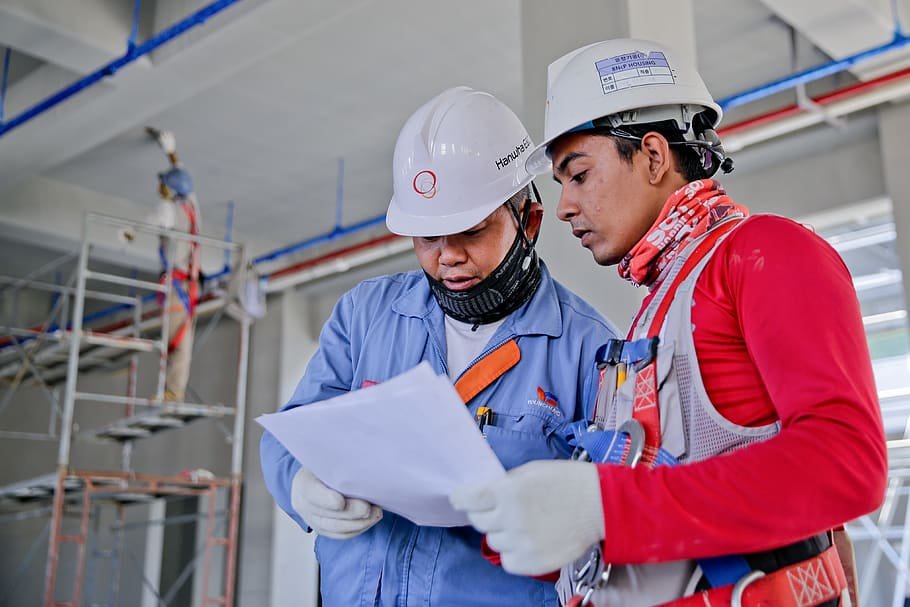Green building is the ideology of being environmentally conscious throughout the entire process of constructing and maintaining a building. This entails consideration of how a project will affect the nearby ecosystem, using sustainable resources, and even being eco-friendly in the event of demolition. While there are financial implications in choosing a green building methodology, the fact is that a community can make a huge environmental difference by collectively going green.
How Does Green Building Benefit a Community?
Any building project that does not take the environment into consideration is liable to cause a negative impact. When entire towns and cities neglect to adhere to a green standard, the effects become more apparent and more alarming. Statistics show that standard building operations and construction account for around 40% of global CO2 emissions.
On a large scale, green building stands to slow harmful changes to the world’s climate. As a more immediate effect, going green can help preserve resources in your local area and improve the quality of life for everyone in your community.
What Features Should Green Building Projects Prioritize?
Efficient use of water and energy is among the top priorities when planning a green building project. Therefore, sustainable plumbing and solar energy fixtures are instantly-recognizable signs of a green building.
Appropriate choice of building materials and design can also benefit the environment. Sustainable building materials include recycled steel, recycled plastic, and reclaimed wood that does not support deforestation. When you see a building that is oriented to utilize solar energy or built to reuse stormwater, you will know that its architectural design was made with the environment in mind.
What About Communities?
Architectural design plays a significant role in the development of green communities. These communities are designed with sustainability and environmental responsibility at their core, integrating elements such as renewable energy sources, efficient waste management systems, and sustainably sourced building materials. One crucial aspect often incorporated into these designs is walkability.
Walkability refers to how friendly an area is to walking. It is an important feature in green communities as it promotes healthier lifestyles and reduces dependency on vehicles, thereby lowering carbon emissions. A high walk score, which evaluates the walkability of any address, indicates that the majority of daily errands do not require a car and can be accomplished on foot. This score considers factors like proximity to amenities, density of population, block length, and pedestrian friendliness. By prioritizing walkability in the architectural design, green communities not only contribute to environmental conservation but also foster social interaction and community engagement.
What About Smart Technology in Homes?
Smart home technology can significantly contribute to creating a greener home by optimizing energy usage and reducing waste. Smart thermostats, for instance, learn your patterns and adjust the temperature accordingly, reducing unnecessary heating or cooling. Intelligent lighting systems can automatically turn off lights when no one is in the room, conserving electricity. Similarly, smart plugs can shut down devices that are not in use, eliminating phantom power drain. Moreover, smart irrigation systems can effectively manage water usage in your garden based on weather forecasts and soil conditions, minimizing water wastage. By leveraging these intelligent systems, homeowners can create more energy-efficient homes, contributing to environmental sustainability while also saving on utility bills.
How Important Is Energy-Efficient Lighting?
Energy-efficient lighting is a very important factor in green building, but energy consumption concerns should not compromise safety. The best lighting solutions are those that can automatically sense and adjust light levels. Through the use of this technology, people can feel safe from hazards and criminal activity without the need to consume unnecessary amounts of energy.
What Can You Do to Advocate for Green Building?
As an individual person, you might feel as though you have no power to convince businesses and politicians to choose green building solutions. However, you can band together with your community to speak out against environmentally harmful practices with a unified voice.
What Are Some Business Ideas Green Entrepreneurs?
For environmentally conscious entrepreneurs, there are numerous green business ideas that can not only be profitable but also contribute to a sustainable future. Green energy is one such area with immense potential. Businesses can focus on the installation and maintenance of renewable energy sources like solar panels or wind turbines, or offer consultancy services for energy efficiency.
Environmental clean-up is another promising field, where businesses can specialize in waste management, recycling, or the remediation of contaminated sites. In agriculture, sustainable farming practices are gaining traction. Entrepreneurs can venture into organic farming, vertical farming, or the production of locally sourced food products. These green business ideas not only align with the growing consumer demand for eco-friendly products and services but also help in creating a more sustainable economy.
Green building can be a surprisingly complex subject to wrap your head around. There must be a balance between what is good for the environment and what features people expect in a modern building, such as walkability and support for green businesses. Once you understand this balance, you can play a bigger part in improving your community in a way that is healthy for the planet.
Guest post by Amanda Henderson and safechildren.info










